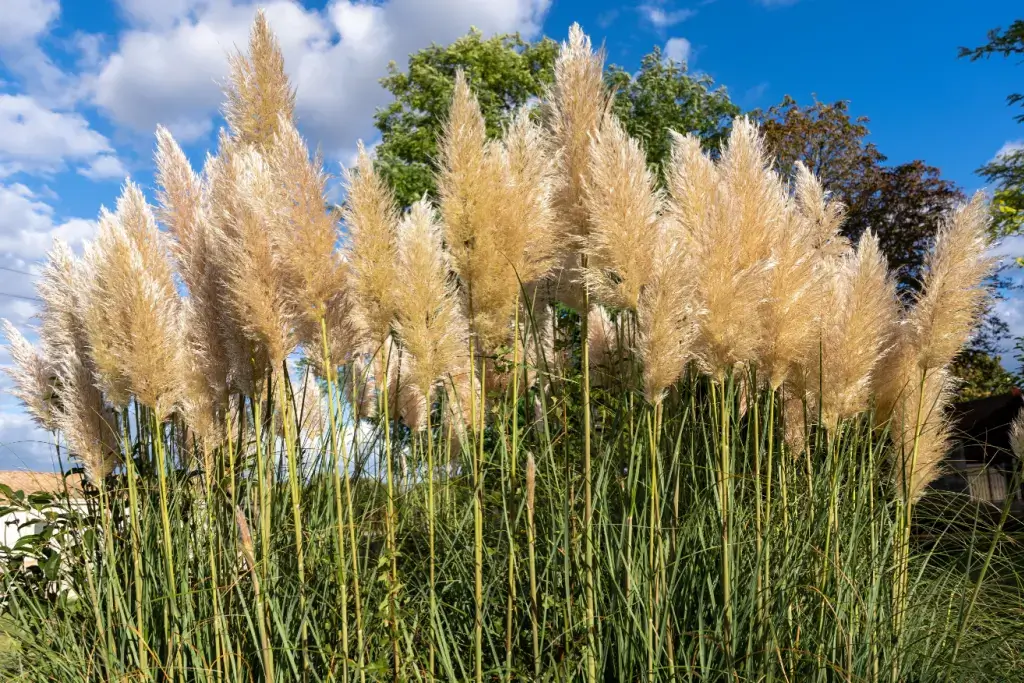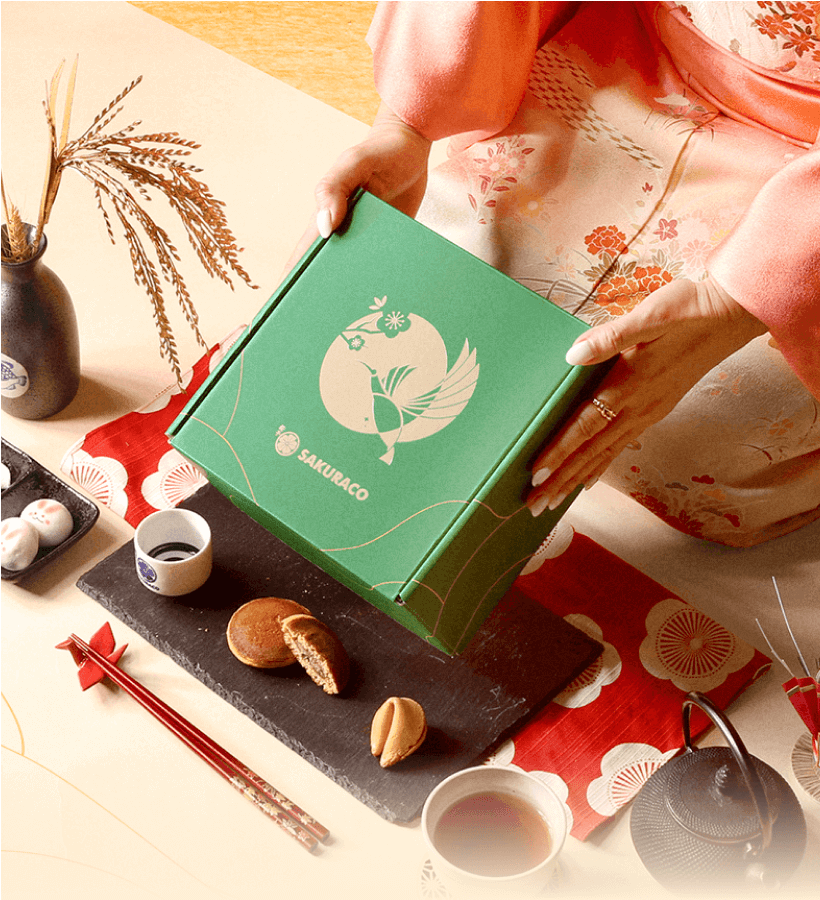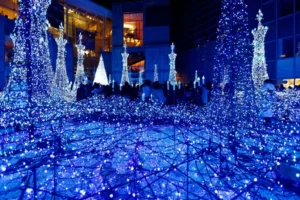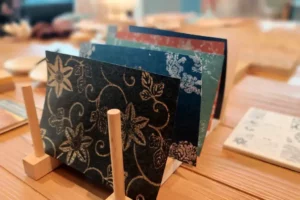In Japan, pampas grass (susuki) symbolizes autumn and is essential to tsukimi. Its slender stalks and feathery plumes glow under the moon. Today, pampas grass fields across the country attract visitors looking for something beautiful. From highland plateaus to volcanic slopes, each location offers its take on this seasonal spectacle.
Table of Contents
TogglePampas Grass in Tsukimi Imagery and Culture
Pampas grass, or susuki, is one of the most famous plants in Japanese autumn, closely tied to tsukimi. Its tall, slender stems and feathery plumes reflect the moonlight beautifully, making it a natural seasonal decoration. Traditionally, susuki was displayed in vases or offered alongside tsukimi dango as part of the moon-viewing ritual. It symbolizes a good harvest and is thought to protect homes from evil spirits when near entrances.
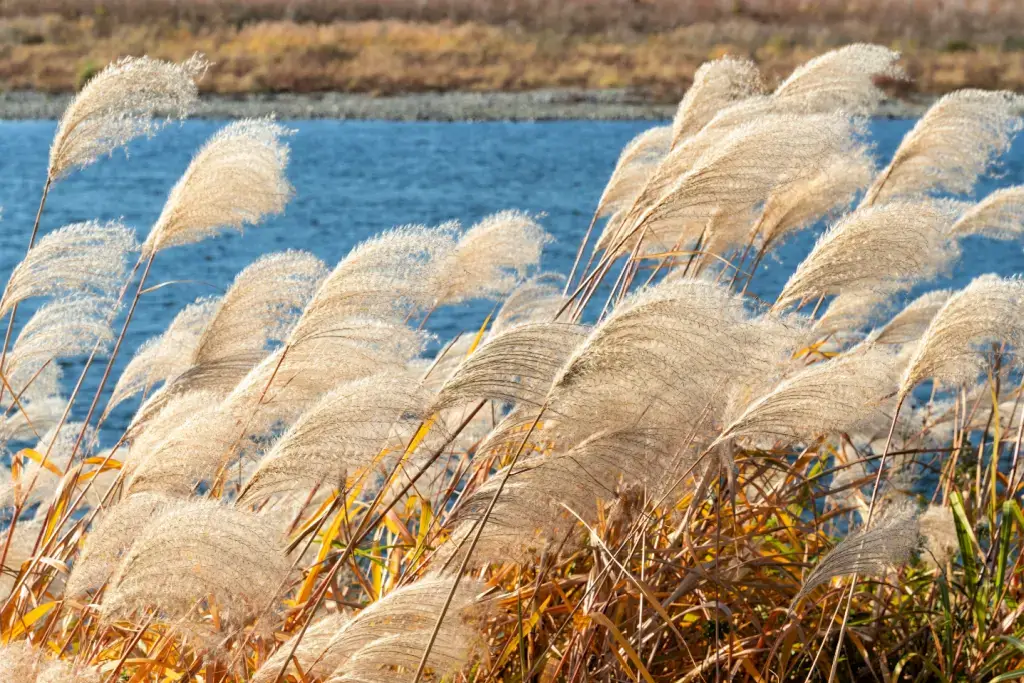
Susuki was a reminder that things didn’t last and of beauty in Heian court life. Aristocrats often created poems comparing the silver glow of pampas grass to the shortness of life. Moon-viewing gatherings would feature pampas grass arrangements alongside music and recitation of seasonal poems. Over time, this imagery became a part of Japanese aesthetics, influencing everything from kimono patterns to ceramics.
Sengokuhara Pampas Grass Field (Hakone, Kanagawa)
The Sengokuhara Pampas Grass Field is one of Japan’s most famous susuki spots. Every autumn, from late September to early November, the slopes are covered in tall grasses that glow gold in the afternoon sun and turn silver under moonlight. A narrow walking path allows visitors to immerse themselves in swaying plumes. The area’s high elevation and open views make it perfect to see the difference between the pampas grass against autumn skies.
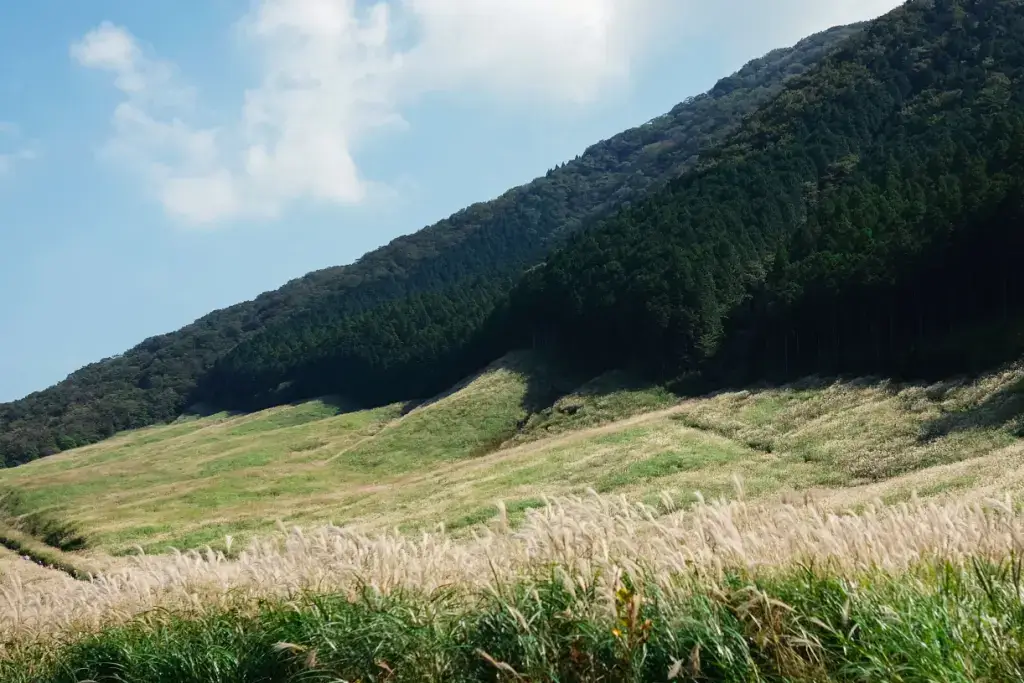
Historically, Sengokuhara was an open grassland used for feeding livestock, but today it is preserved for its scenic beauty. The grass is cut each March in a controlled burn, ensuring healthy regrowth and maintaining the field’s appearance. During peak season, the cool breezes, golden light, and views create a peaceful atmosphere. Photographers and poets come to capture its changing colors, just like the artists in the past.
Are you looking to enjoy the mid-autumn festival this year? Check out Sakuraco! Sakuraco delivers traditional Japanese snacks, teas, and sweets from local Japanese makers directly to your door so you can enjoy the latest treats directly from Japan!

Mount Aso (Kumamoto)
The slopes surrounding the Aso area in Kumamoto are home to large fields of this beloved plant. Here, the grasses grow in thick waves, and are especially beautiful in late autumn when the silver seed heads ripple in the wind. The volcanic landscape provides a dramatic backdrop, with distant mountains and the large plains enhancing the scene. Visitors can explore various walking trails, offering different vantage points for appreciating the fields.

Mount Aso’s pampas grass fields also hold cultural and ecological value. The controlled burning of grasslands each spring, known as noyaki, has been practiced for centuries to maintain the area’s natural ecosystem. This tradition supports the regrowth of susuki and preserves the region’s wildlife. Visiting during the tsukimi period allows you to enjoy susuki differently, as the moonlit plumes seem to glow against the dark volcanic slopes.
Hiruzen Highlands (Okayama)
The Hiruzen Highlands in Okayama are known for their vast plateaus and sweeping fields of pampas grass. The highland air is cool and refreshing, making autumn visits particularly enjoyable. Here, it grows densely, creating thick, shimmering waves when the wind passes. The scenic viewpoints around the highlands offer panoramic views of the mountains, enhancing the sense of openness.
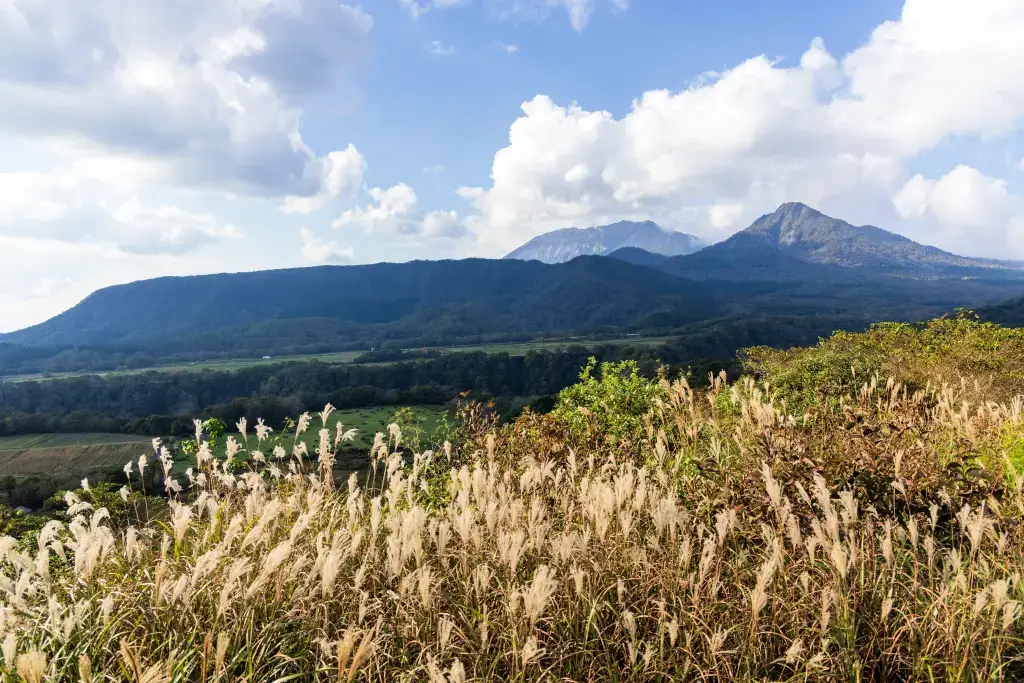
In addition to pampas grass, Hiruzen is also famous for dairy farming, meaning visitors can pair their autumn stroll with fresh local treats. The highlands change character with the seasons, but the susuki period is arguably the most photogenic. Walking through these fields during tsukimi allows for quiet reflection, like the moon-viewing gatherings of the past. This seasonal transformation is part of what keeps visitors returning year after year.
Oishi Kogen Highlands (Wakayama)
Oishi Kogen Highlands offers one of the most scenic pampas grass experiences in western Japan. The plateau is covered in golden and silver grasses each autumn, with clear walking paths weaving through the landscape. On sunny days, the grass glows warmly, while the plumes seem to take on a softer, moonlit tone in the evening. The open horizon makes it easy to feel a deep connection with the surrounding nature.
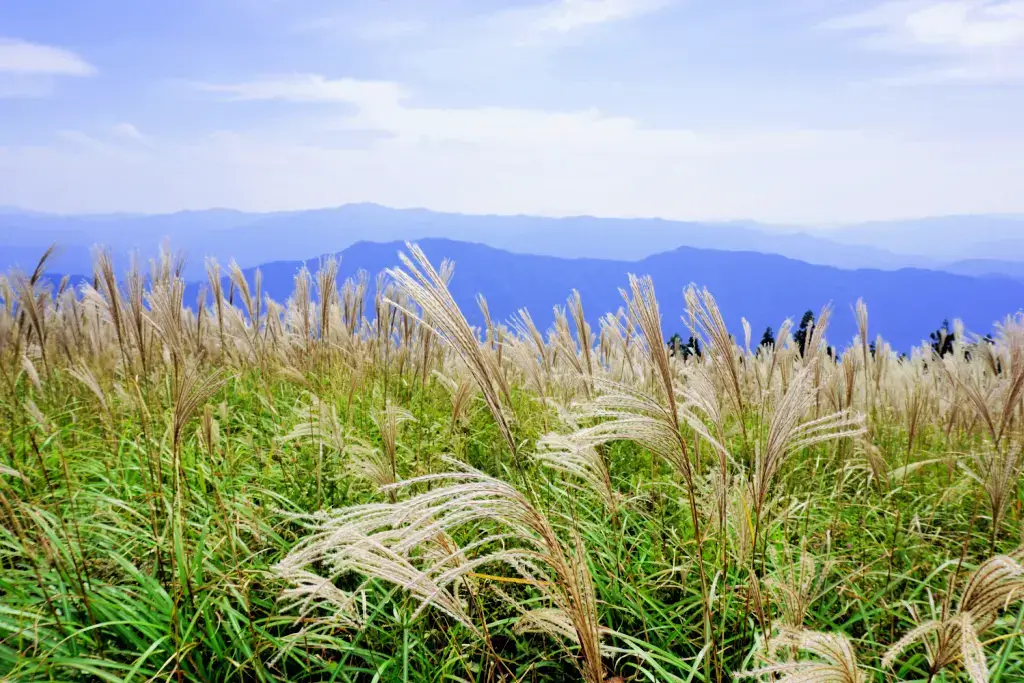
The highlands have become increasingly popular for autumn photography. Visitors often stay until dusk, when the pampas grass sways gently against the backdrop of the setting sun and rising moon. Seasonal festivals in nearby towns sometimes feature decorations and themes inspired by the highlands’ susuki. Oishi Kogen is a standout location for autumn travel where the spirit of tsukimi can be experienced in its most natural form.
Why should I see pampas grass in Japan?
People seek out pampas grass in Japan for its beauty and tradition. Its role in tsukimi connects visitors to traditional cultural practices, while its natural appearance offers seasonal magic. Viewing susuki in person allows one to experience the sights that inspired poets, painters, and artisans for generations. Unlike more permanent attractions, pampas grass fields are short and fast, changing color, texture, and light each week.
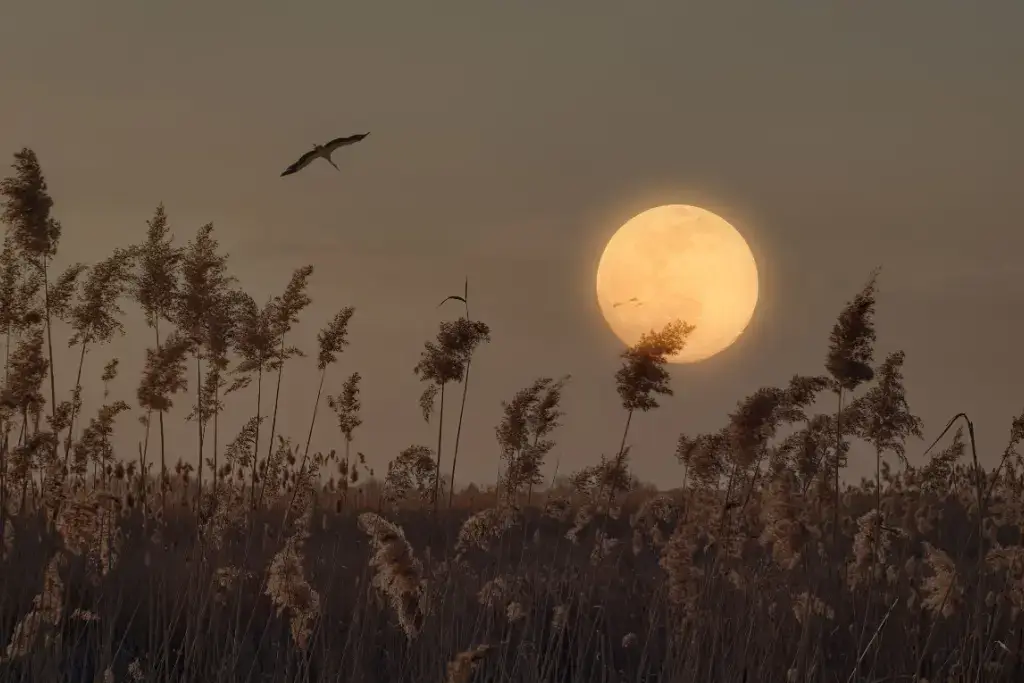
Moreover, pampas grass fields are often located in scenic highlands or volcanic areas, meaning the journey to see them can be just as rewarding as the destination. These outings offer a chance to slow down, breathe in the crisp air, and reflect on the turning of the seasons. For those visiting during the tsukimi period, the connection between plant, moon, and tradition becomes especially vivid. Have you ever been to a pampas grass field? Where did you go? Let us know in the comments below!

